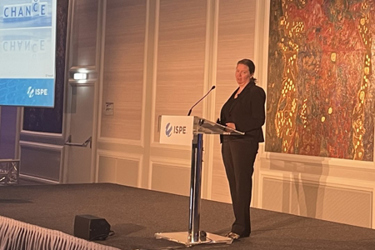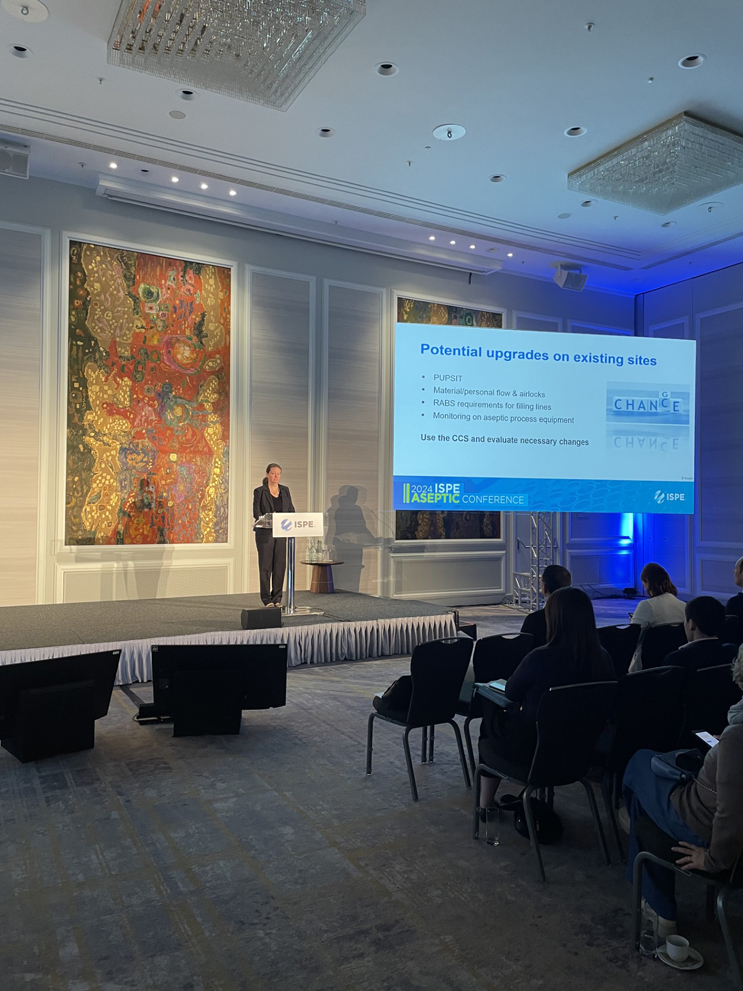Quick Takes From Takeda Austria's Annex 1 Rollout
A conversation with Maria Löflund, site head Vienna, Takeda Manufacturing Austria AG

The latest Annex 1 update brought aseptic pharmaceutical manufacturing requirements up to speed with contemporary processes and technology.
Few people, if anyone, will tell you implementing it has been easy.
The International Society for Pharmaceutical Engineering’s 2024 Aseptic Conference happened this month in Vienna. During the conference, Maria Löflund, site head at Takeda Manufacturing Austria, spoke about the easier and the more challenging parts of Annex 1 based on her team’s experience bringing their site into compliance.
We caught up with her to ask for the highlights of her talk. Here’s what she told us.
The Annex 1 2022 revision went into effect back in August and got a lot of press then. For the sake of background, can you give us the highlights? Maybe just introduce the parts you focused on in your talk at the conference?
Löflund: The most recent update of Annex 1 was a multiyear effort with regulators in the lead and with a strong dialogue with the industry with the aim to improve aseptic practices globally.
We had a cross-functional team of global and local experts including sterility assurance, manufacturing, engineering, validation, and quality working on the implementation plan together, and we received input from external organizations.
The three topics I highlighted in my presentation are around a mandatory holistic contamination control strategy (CCS), pre-use-post-sterilization integrity testing (PUPSIT) from best-practice to requirement, and the human factor in aseptic operations both on gowning and skills in terms of continuous learning and training.
A company starting fresh with new construction would, presumably, implement Annex 1 more easily than at legacy sites. But you spoke about special considerations for new facilities. What were they?
Löflund: When building new facilities or new aseptic production units, the opportunity is to build in aseptic practices by design. Apart from well-known isolator technology for fill/finish operations, all product transitions and cleaning/sterilization processes using automated technology with as little human interaction as possible are essential.
These included automated vial and lyo loading, in/online sampling without crossing the aseptic boundaries, as well as clear visibility of all aseptic operations without being in the room.
Also, the personnel and material flows need to be designed well and require space (unidirectional flow, automated technologies for disinfection).
Maintenance on hardware as well as software needs to be planned in a manner that limits any necessity to open the aseptic core. Aseptic by design needs to be the state of mind, together with sustainability and safety by design.

Maria Löflund, site head at Takeda Austria, spoke about her facilities’ Annex 1 rollout during ISPE’s 2024 Aseptic Manufacturing conference, which happened in March in Vienna.
For those with legacy sites, have you come up with any strategies for implementation without extended pauses?
Löflund: The essential piece here is to use the CCS to truly detect any weaknesses in the setup. These could be related to personnel or material flows, the monitoring program, or lack of PUPSIT. The current version of Annex 1 considers restricted access barrier systems (RABS) as appropriate technology in addition to isolator technology. The strategy for each setup needs to be based on the risks detected and, in most cases, it is possible to implement improvements without a complete redesign of the setup.
Strategies of stepwise implementation or restricted area shutdowns can help to keep the impact low on the supply chain. Leveraging commissioning for qualification can increase ramp-up speed.
New equipment sterilization requirements in Annex 1 were particularly daunting. Did you and the team at Takeda Vienna develop any efficiencies our readers would find useful?
Löflund: We also use the CCS here to access all our sterilization processes and the established programs to keep them in a validated state. In some cases, of course, the efforts increase.
Some suppliers already offer enhanced online monitoring, for example, to replace the Bowie Dick test for autoclaves. The question is if these systems work stably enough already.
What did we miss? Any other lessons from Annex 1 implementation you can share with our readers?
Löflund: One key aspect of the Annex 1 implementation is the time and investments needed for some of the improvements. It is important to involve corporate strategy and management early on and build a holistic long-term investment plan to modernize aseptic processing lines/units.
About The Expert:
 Maria Löflund has more than 20 years of experience in the biotech industry and has worked as a site head Takeda in Vienna since 2023. Previously, she worked as a site head for Lonza and before that for Shire, which later was acquired by Takeda. She earned her M.Sc. from Helsinki University and her Ph.D., from Vienna University of Technology.
Maria Löflund has more than 20 years of experience in the biotech industry and has worked as a site head Takeda in Vienna since 2023. Previously, she worked as a site head for Lonza and before that for Shire, which later was acquired by Takeda. She earned her M.Sc. from Helsinki University and her Ph.D., from Vienna University of Technology.
